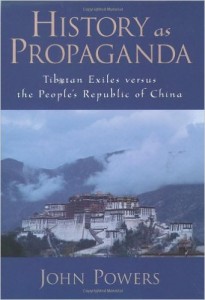
By Andie Alexander
I’m currently creating an index for an edited volume, and while I’ve repaginated an index before (for the new edition of a book), this is the first time that I have ever compiled an index from scratch. As I’ve been going through the book, I’ve been marking all of the important thoughts, people, theories, etc. Well, I say “important” not because those ideas and names are self-evidently interesting; after all, who would think that Ebenezer Scrooge or the recent Disney⋅Pixar film Inside Out would be among the indexed items for an edited volume in religious studies?
Much like the above etymological definition of “index” suggests, indices (or rather indexers — i.e., me), to be more precise, do “discover,” “point out,” and “disclose” information to their readers. That is to say that indices are neither self-evident nor neutral descriptors of a book’s contents. For what would a neutral descriptor even be? The number of times a word appeared? Well no, because apart from the word “the” making an extraordinary number of appearances, even doing such a word count seems to privilege quantity of word usage over the general argument those words are making. That said, indices are anything but neutral and are themselves, by nature of being a human production, very much situated and, yes, biased (they have a viewpoint). So for me, the indexer, to compile a list of what I and those editing the volume deem relevant for the work, I must have a certain understanding of the argument of the book to determine whether Ebenezer Scrooge is worth including in the index — worth offering to a reader as a hint of more to come. That is, in selecting people, places, and ideas for the index, I have to consider which ones I think best direct and support the arguments, theories, and e.g.s of the volume. Continue reading “Indexing As Meaning-Making”

 Earlier this week Stephen S. Bush
Earlier this week Stephen S. Bush 
 This semester I’m teaching a course on the uses of anachronism in the study of the ancient Greek world, one such anachronism being the concept of religion itself (for it is hardly a local term in the ancient Greek world). Last week, just before class, I happened to stumble across an article that made the rounds on Facebook entitled
This semester I’m teaching a course on the uses of anachronism in the study of the ancient Greek world, one such anachronism being the concept of religion itself (for it is hardly a local term in the ancient Greek world). Last week, just before class, I happened to stumble across an article that made the rounds on Facebook entitled  In History as Propaganda: Tibetan Exiles versus the People’s Republic of China, John Powers surveys a wide variety of histories of Tibet, written by Tibetan, Chinese, and western (i.e., American or European) authors. The story of the relations between China and Tibet — is Tibet an independent state or merely a small part of China’s empire? — can be told in many different ways, depending on the interests or agenda of the author spinning the narrative. Of particular interest to me is how Powers notes the normative vocabulary of the historians he surveys. The authors tend to systematically use normative nouns and adjectives — with positive and negative valuations attached to them — in their narratives. See the following two tables:
In History as Propaganda: Tibetan Exiles versus the People’s Republic of China, John Powers surveys a wide variety of histories of Tibet, written by Tibetan, Chinese, and western (i.e., American or European) authors. The story of the relations between China and Tibet — is Tibet an independent state or merely a small part of China’s empire? — can be told in many different ways, depending on the interests or agenda of the author spinning the narrative. Of particular interest to me is how Powers notes the normative vocabulary of the historians he surveys. The authors tend to systematically use normative nouns and adjectives — with positive and negative valuations attached to them — in their narratives. See the following two tables:  Without arriving on the scene with the work of a social theorist like Emile Durkheim in our back pockets, I’m not sure what we would make of the French parliament joining together yesterday to sing their
Without arriving on the scene with the work of a social theorist like Emile Durkheim in our back pockets, I’m not sure what we would make of the French parliament joining together yesterday to sing their  How do you celebrate your holidays? The
How do you celebrate your holidays? The 
 I recently wrote a post, scheduled for a week or so from now, in which I used the term “white flight” — which names the process whereby many U.S. inner cities have, since about the 1960s, lost a large portion of their white population by people moving out to the suburbs — and so I was thinking about linking the term in that post to a definition online, for those who were not already familiar with it.
I recently wrote a post, scheduled for a week or so from now, in which I used the term “white flight” — which names the process whereby many U.S. inner cities have, since about the 1960s, lost a large portion of their white population by people moving out to the suburbs — and so I was thinking about linking the term in that post to a definition online, for those who were not already familiar with it.